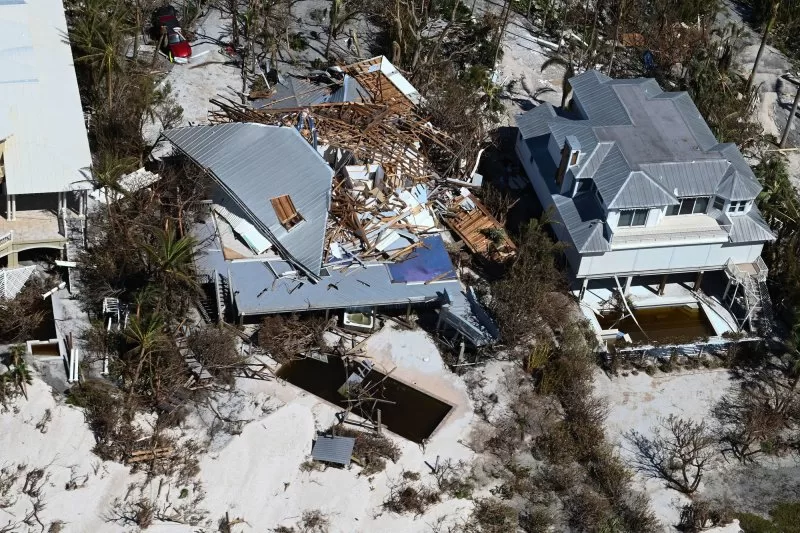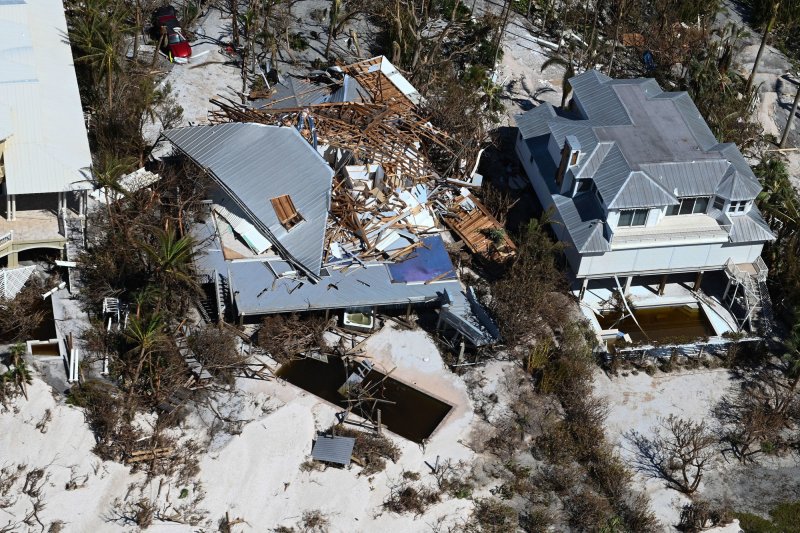A U.S. Coast Guard Air Station Clearwater MH-60 Jayhawk aircrew conducts overflights along the coast of western Florida following Hurricane Ian making landfall in early October 2022. The storm at its peak was a Category 5 hurricane. On Monday, a study was published suggesting a Category 6 be added to the warning system. File Photo by POC3 Riley Perkofski/U.S. Coast Guard/UPI |
License PhotoFeb. 6 (UPI) — As climate change is causing more intense storms, a new study is suggesting that the five-scale system by which the potential damage caused by hurricanes is gauged should be revised to include a sixth category to properly broadcast the risks these intense storms present.
Introduced in the early 1970s by the U.S. National Hurricane Center, the Saffir-Simpson Hurricane Wind Scale estimates potential property damage based on the severity of a storm’s winds with the highest level 5 warning “a high percentage of framed homes will be destroyed” by winds of 157 mph or faster.
The study published Monday in the Proceedings of the National Academy of Sciences states the open-ended Category 5 “becomes increasingly problematic for conveying wind risk in a warming world.”
Authors Jim Kossin of the First Street Foundation and Michael Wehner of Lawrence Berkeley National Laboratory argue that as storm winds continue to grow stronger, Category 5 fails to adequately warn of potential dangers hurricanes present and suggest a Category 6 warning that encompasses speeds of 192 mph and faster be introduced to the scale.
“We find that a number of recent storms have already achieved this hypothetical Category 6 intensity and based on multiple independent lines of evidence examining the highest simulated and potential peak wind speeds, more such storms are projected as the climate continues to warm,” they wrote in the study.
According to the study, of the 197 Category 5 storms tallied between 1980 and 2021, half occurred in the last 17 years. It also found that five of those storms exceeded the hypothetical Category 6 rating and all within the last nine years.
The authors of the study state that under current trends there is an increased risk of Category 6 storms developing.
“Our motivation is to reconsider how the open-endedness of the Saffir-Simpson Scale can lead to underestimation of risk, and, in particular, how this underestimation becomes increasingly problematic in a warming world,” Wehner said in a statement.

